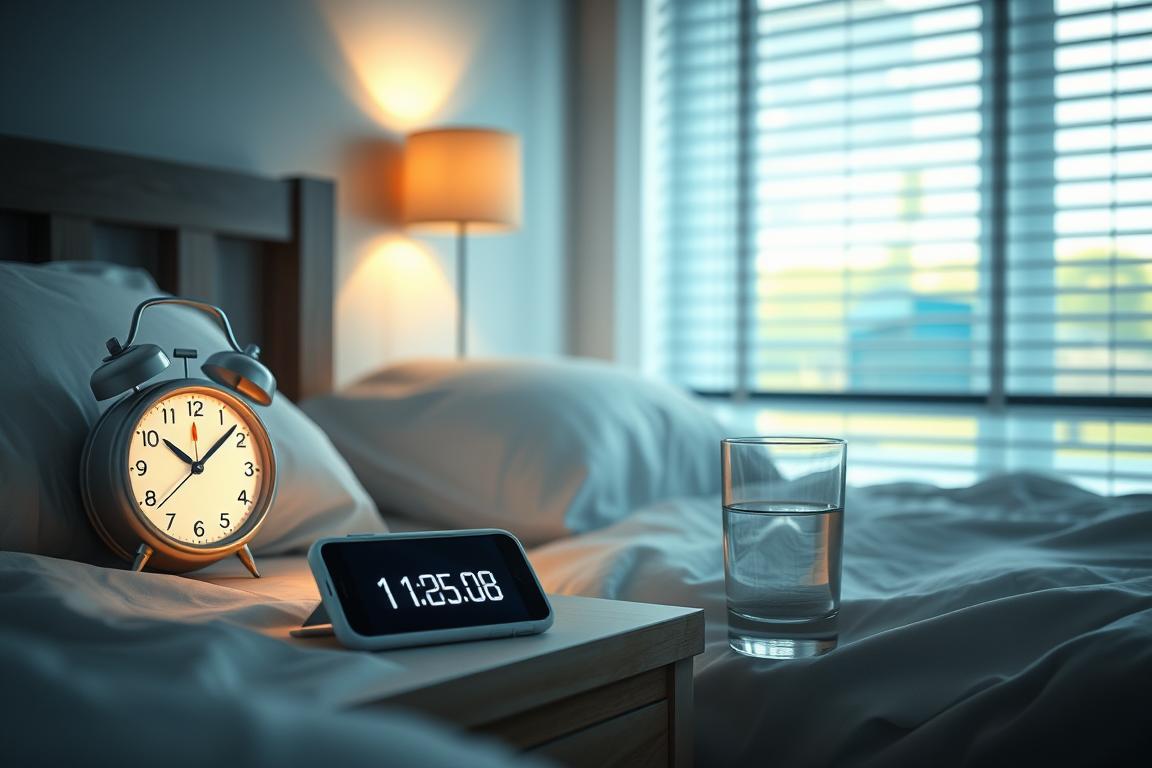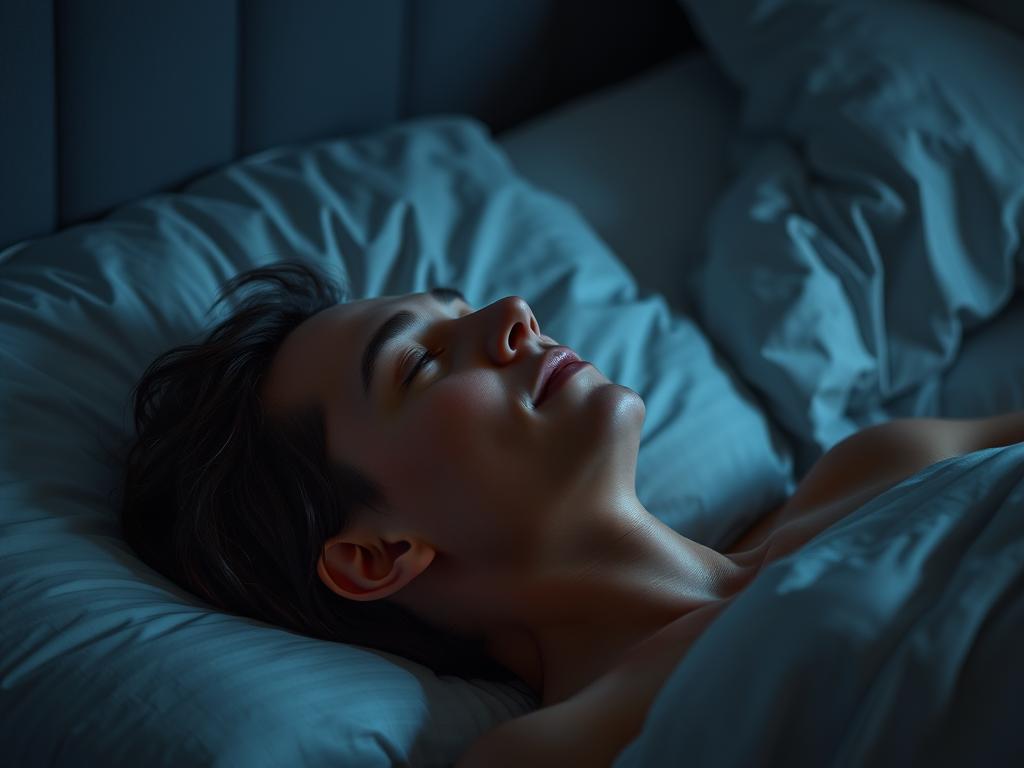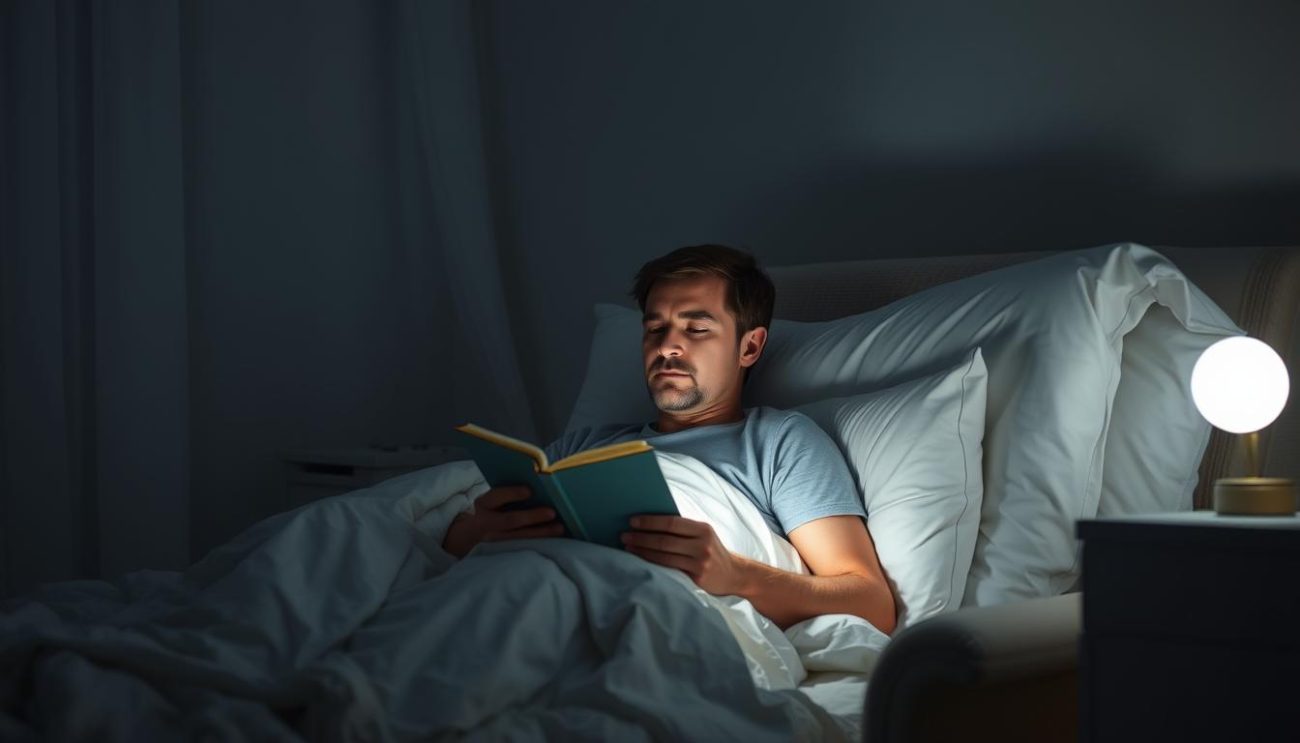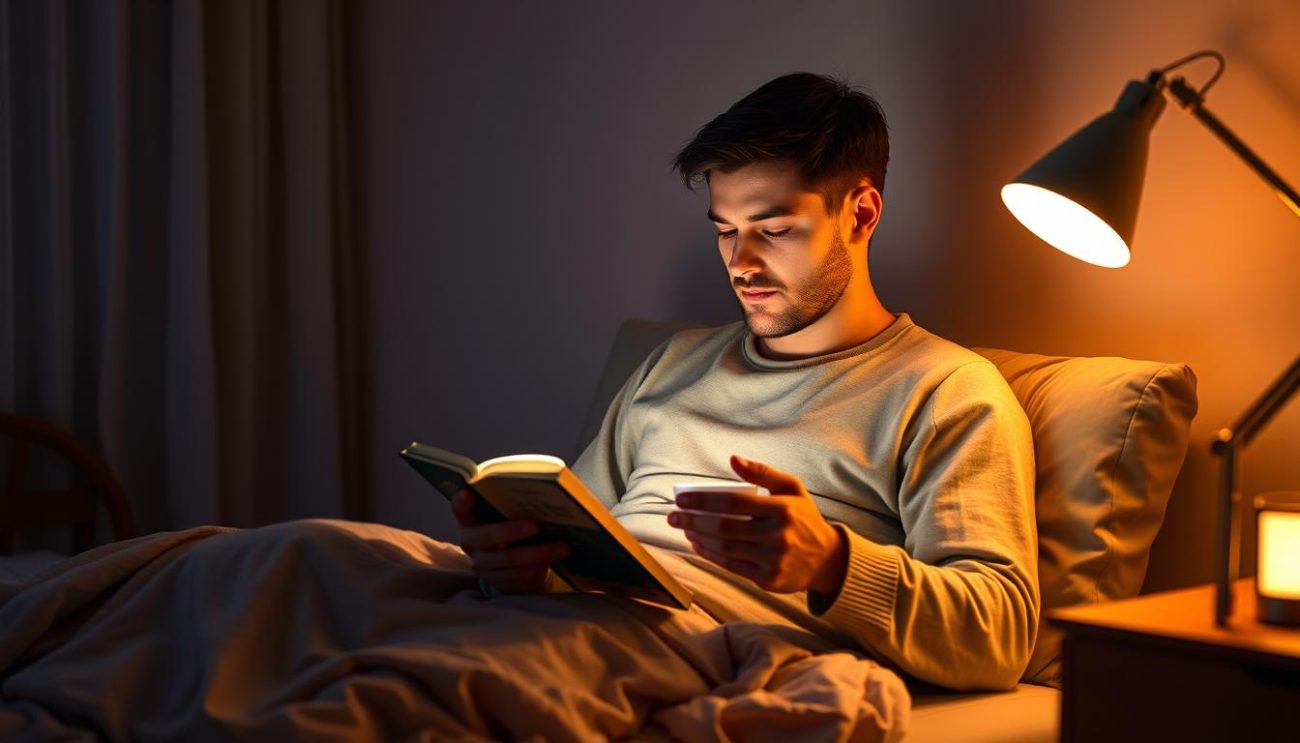We’ve all been there – wide awake at 3 AM, staring at the ceiling, watching minutes tick by as sleep feels increasingly impossible. That frustrating cycle of waking up and being unable to drift back to sleep can leave you exhausted and anxious. As someone who struggled with this exact problem for years, I understand the desperation that comes with nighttime awakenings. The good news? There are proven solutions that can help you return to restful sleep – and I’m here to share what actually works.
Understanding why you’re waking up and struggling to return to sleep is the first step toward finding an effective solution. Sleep maintenance insomnia – the technical term for difficulty staying asleep – can stem from various factors:

Our sleep patterns naturally change with age. As we get older, our bodies produce less melatonin – the hormone that regulates sleep. Women experiencing perimenopause or menopause often report increased nighttime awakenings due to hormonal fluctuations and night sweats.
That afternoon coffee or evening glass of wine might be sabotaging your sleep. Caffeine can remain in your system for 6-8 hours, while alcohol, though initially sedating, disrupts your sleep cycle as your body metabolizes it during the night.
When stress hormones like cortisol remain elevated, your body stays in “alert mode,” making it difficult to maintain deep sleep. This is why anxiety and racing thoughts often peak during those middle-of-the-night awakenings.
Sleep drive is the biological pressure to sleep that builds throughout your waking hours. If you wake up after several hours of sleep, your accumulated sleep drive may have diminished enough that returning to sleep becomes challenging.

Temperature fluctuations, noise disturbances, or too much light can trigger awakenings. Even your partner’s snoring or movement can pull you from deep sleep into a lighter stage where you’re more likely to fully wake up.
Going to bed and waking at different times disrupts your body’s internal clock. This circadian rhythm misalignment makes it harder for your body to know when it should be sleeping deeply.
The blue light emitted from phones, tablets, and computers suppresses melatonin production. Additionally, the content you consume can be mentally stimulating, making your brain too active for sleep.
Regular exercise helps build sleep drive and reduces stress. Without sufficient physical activity, you may not feel tired enough to maintain continuous sleep throughout the night.
After months of fragmented sleep left me exhausted and irritable, I discovered Shilajitcore+ with its patented Neuroresin Formula. Within weeks, my middle-of-the-night awakenings decreased dramatically. The natural compounds helped regulate my sleep cycle without the grogginess of sleep medications.
When you find yourself awake in the middle of the night, these evidence-based techniques can help you return to sleep more quickly. I’ve personally tested each of these methods and found them incredibly effective when used consistently.

This powerful breathing pattern acts like a natural tranquilizer for your nervous system:
I was skeptical at first, but this technique consistently helps me fall back asleep within minutes by activating my parasympathetic nervous system.
This mindfulness practice helps release physical tension:
This technique helps interrupt racing thoughts by redirecting focus to physical sensations instead.
This technique helps identify and release hidden tension:
The contrast between tension and relaxation helps your body recognize and release stress you may not realize you’re holding.

If you can’t fall back asleep within 15 minutes, get out of bed and go to another room. Do something relaxing with dim lighting until you feel sleepy again. This prevents your brain from associating your bed with wakefulness and worry.
Turn your clock away or remove it from your bedroom. Checking the time increases anxiety about not sleeping, creating a vicious cycle that makes returning to sleep even harder.
Keep a notebook by your bed. If racing thoughts keep you awake, write them down to symbolically transfer them from your mind to the paper. This simple act can significantly reduce middle-of-the-night rumination.
Imagine a peaceful scene in vivid detail, engaging all your senses. Whether it’s a beach, forest, or childhood home, this mental exercise can redirect your brain from stress to relaxation.
“After struggling with middle-of-the-night awakenings for years, combining the 4-7-8 breathing technique with Shilajitcore+ finally gave me consistent, uninterrupted sleep. The difference in my energy and focus has been remarkable.”
— Michael T., 42
While the techniques above can help you fall back asleep in the moment, these longer-term strategies address the root causes of sleep maintenance insomnia.

Keep your bedroom between 60-67°F (15-19°C). Your body temperature naturally drops during sleep, and a cool room supports this process. Consider moisture-wicking sheets if night sweats are an issue.
Use blackout curtains to eliminate outside light and remove sources of blue light from your bedroom. Even small LED indicators on electronics can disrupt sleep quality.
Try a white noise machine or fan to mask disruptive sounds. Alternatively, earplugs can be effective if your partner snores or your environment is unpredictably noisy.
Invest in a supportive mattress and pillows that maintain proper spinal alignment. The right bedding can prevent discomfort that might wake you during the night.

Limit caffeine to morning hours only. Even if you can fall asleep initially, caffeine can disrupt your sleep architecture, making you more likely to wake during the night and struggle to return to sleep.
Finish dinner at least 2-3 hours before bedtime. Late meals can trigger digestive activity and acid reflux that disrupts sleep. If you need a bedtime snack, choose something light with complex carbs and a small amount of protein.
While alcohol might help you fall asleep initially, it significantly disrupts your sleep cycle during the second half of the night – precisely when most problematic awakenings occur. Limit consumption or avoid it entirely.

Aim for 30 minutes of moderate exercise most days, preferably in the morning or afternoon. Regular physical activity has been shown to improve sleep quality and duration while reducing nighttime awakenings.
Go to bed and wake up at the same time every day – even on weekends. This regularity strengthens your circadian rhythm, making both falling asleep and staying asleep easier.
Get 15-30 minutes of natural light exposure within an hour of waking. This helps regulate your circadian rhythm and supports melatonin production later in the evening.
Establish a 30-60 minute pre-sleep routine that signals to your body it’s time to relax. This might include reading, gentle stretching, or meditation – activities that transition you from daytime alertness to sleepiness.
When I incorporated Shilajitcore+ into my evening routine, I noticed a dramatic improvement in my ability to fall back asleep after nighttime awakenings. The patented Neuroresin Formula works with your body’s natural processes to support deeper, more continuous sleep without morning grogginess.
While occasional sleep disruptions are normal, persistent problems falling back asleep may indicate an underlying condition that requires professional attention.

This structured program helps identify and replace thoughts and behaviors that cause or worsen sleep problems. It’s considered the first-line treatment for chronic insomnia and has been shown to be more effective than sleep medications in the long term.
If your doctor suspects a sleep disorder like sleep apnea or restless legs syndrome, they may recommend a sleep study. This can be done in a sleep lab or sometimes at home with portable monitoring equipment.
While not typically recommended for long-term use, certain medications may help break the cycle of chronic insomnia. These should always be discussed with your healthcare provider, as they carry risks of side effects and dependency.
Some people find relief with supplements like melatonin, valerian root, or magnesium. The effectiveness varies by individual, and it’s important to discuss any supplements with your healthcare provider to ensure they won’t interact with medications or conditions.
“I tried everything for my middle-of-the-night insomnia – meditation apps, prescription sleep aids, even changing my mattress. Nothing worked until I combined CBT-I techniques with Shilajitcore+. Now I sleep through the night consistently for the first time in years.”
— Sarah L., 38
Waking at the same time each night often relates to your sleep cycles and circadian rhythm. Around 3 AM, your sleep is naturally lighter, making you more susceptible to awakening from environmental disturbances, anxiety, or hormonal fluctuations. Traditional Chinese Medicine suggests this time corresponds to liver energy, while Western medicine points to a natural cortisol increase that begins in the early morning hours.
Brief awakenings during the night are completely normal and often occur between sleep cycles. Most people experience 4-6 sleep cycles per night, each lasting about 90 minutes. You may not remember these brief awakenings if you quickly return to sleep. It only becomes problematic when you stay awake for extended periods or have difficulty falling back asleep.
Ideally, you should be able to fall back asleep within 15-20 minutes. If you’re awake longer than this, it’s best to get out of bed and do something relaxing in dim light until you feel sleepy again. Staying in bed while awake can create an association between your bed and wakefulness, potentially worsening insomnia over time.
Foods containing tryptophan (an amino acid that helps produce melatonin) may support better sleep continuity. These include turkey, chicken, eggs, dairy, nuts, and seeds. Complex carbohydrates can help make tryptophan more available to your brain. A small bedtime snack combining these elements, like a small bowl of oatmeal with milk or a few nuts, might help some people maintain sleep throughout the night.
While melatonin supplements can help with initial sleep onset, they’re less effective for middle-of-the-night awakenings. This is because they work best when taken 1-2 hours before bedtime to signal your body it’s time to sleep. Taking melatonin after waking at night may disrupt your natural sleep cycle and leave you feeling groggy in the morning. Relaxation techniques are generally more effective for returning to sleep.

The frustration of waking up and being unable to fall back asleep doesn’t have to be a permanent part of your life. By understanding the underlying causes and implementing the science-backed strategies outlined in this article, you can break the cycle of middle-of-the-night insomnia.
Remember that consistency is key – these approaches work best when applied regularly as part of a comprehensive sleep hygiene practice. Start by identifying which factors might be contributing to your awakenings, then systematically address them with the appropriate techniques.
If you continue to struggle despite these efforts, don’t hesitate to consult with a healthcare provider. Sleep is fundamental to your physical and mental wellbeing, and getting proper support is worth the investment.

After years of fragmented sleep and exhausted days, discovering Shilajitcore+ was my turning point. The natural, bio-optimized formula supports your body’s own sleep regulation systems. I now wake up feeling genuinely refreshed instead of counting the hours until I can nap again.